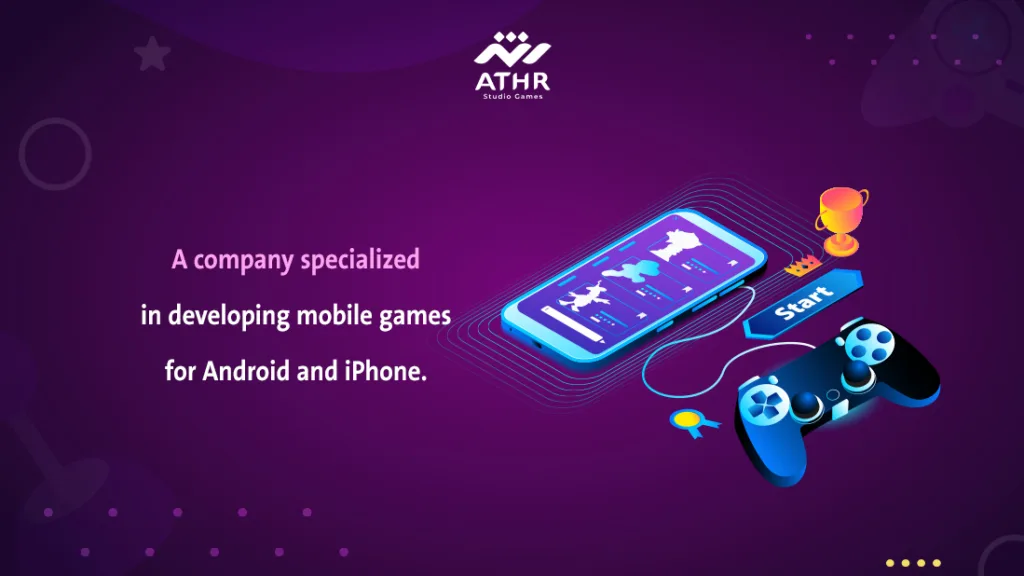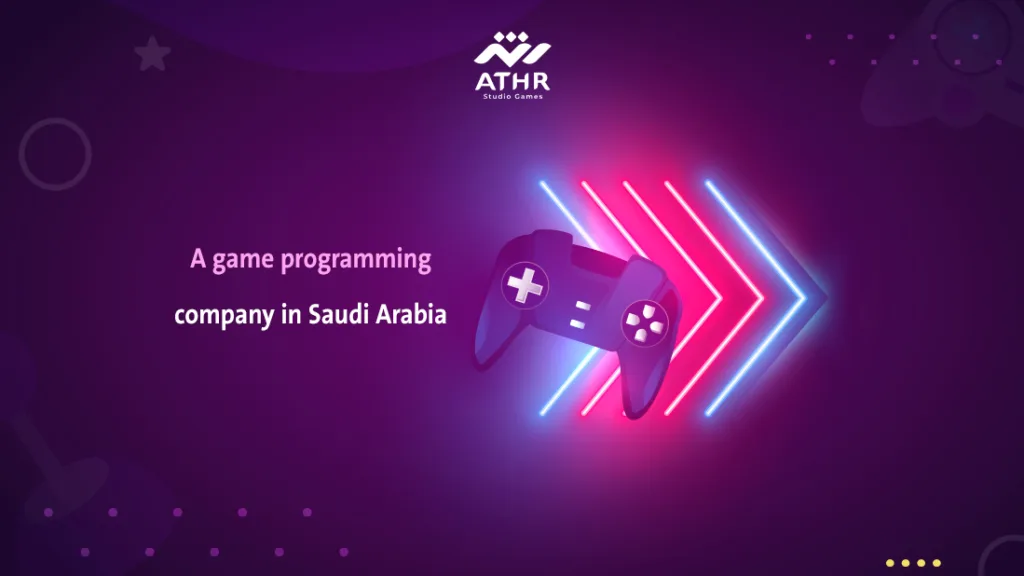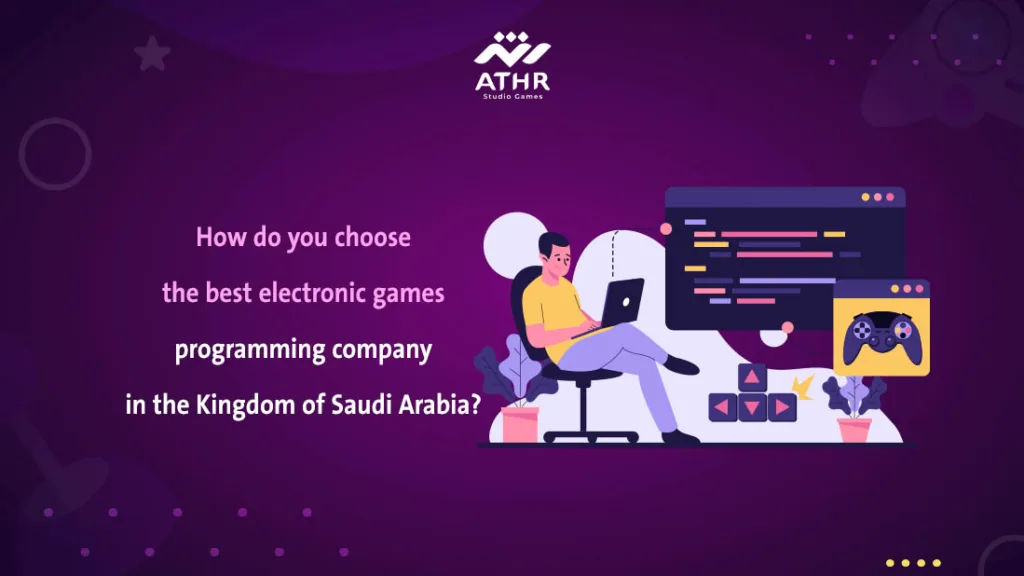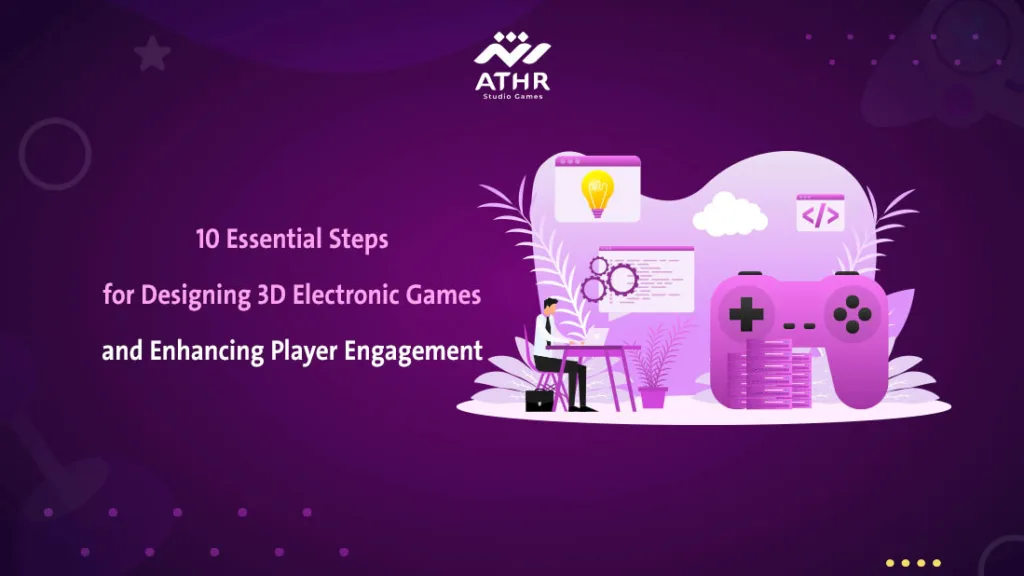If you’re thinking about starting a video game design project, it requires you to define an innovative and attractive idea for the game you wish to develop. After defining the idea, choose the appropriate tools to start building your digital world. Don’t forget to set a clear development plan that includes design, programming, and necessary testing. Finally, work on a marketing strategy to ensure your game’s success and attract players.
Do you have an innovative game idea? 📞Contact us today and start your video game design journey with our professional team!
What are the First Steps to Starting a Video Game Design Project?
Starting any video game design project requires defining some foundations that will help you achieve a clear vision. Here are some initial steps you should consider:
- Determine the game type: Decide whether you will design a mobile game, a PC game, or a game for other platforms.
- Develop an innovative idea: A successful game starts with a unique idea that attracts players.
- Identify the necessary tools: Choose the software tools you will use based on the game type.
- Build your team: Assemble a team of developers and designers who possess the necessary skills.
Learn the Essentials for Building a Successful Video Game
To design a successful video game, you must have a basic understanding of many technical and artistic aspects. Some of the essentials you should learn include:
- Game Programming: Learn programming basics using languages like C++, Python, or JavaScript.
- Game Engines: Choose a suitable engine like Unity or Unreal Engine, as they facilitate the design and development process.
- Game Design: Learn how to design visual elements, characters, and environments using tools like Photoshop or Blender.
- Game Testing: Learn how to regularly test the game to ensure its quality before launch.
How to Determine the Core Game Idea Before Starting Design
Defining the core game idea is the most important part of starting a project. Here are some tips to help you formulate an innovative idea:
- Target Audience: It’s important to know who your target audience is. Is it a game for children or adults?
- Determine Game Genre: Choose between different genres like action, sports, adventure, or puzzles.
- Think About the Story: Is there a story behind the game? A good story can be the element that distinguishes your game.
- Innovation: Don’t hesitate to incorporate new and innovative ideas; this could be the element that makes your game unique.
✍️In the upcoming steps, we will cover more information about game development stages and design tools, along with tips for beginners.
Do you have a question about game design? 📞Contact us for an accurate answer now!
Tips for Beginners in Video Game Design
When you start designing video games, there are a set of tips you should be aware of to ensure your success. Here are some essential tips:
- Start with good planning: Before starting to design the game, you should have a clear idea of the game’s objective and its target audience. Good planning helps you define game features and guide the team toward the right goals.
- Learn programming basics: If you don’t have programming experience, the initial learning step might be difficult. However, learning a programming language like Python or C++ will make it easier to effectively implement your ideas.
- Use powerful game engines: Game engines like Unity and Unreal Engine provide integrated environments that help you develop games easily. They contain essential tools like simulation, animation, and sound integration.
- Set a clear budget: Game design requires a significant budget, so it’s important to determine the available funds for the project and how to distribute them among human resources and required tools.
How to Build an Innovative Game Idea That Succeeds in the Market
Choosing an innovative game idea is the foundation of project success. But how can you build a distinctive game idea that achieves market success?
- Look for market gaps: Before you start developing your game, be sure to study the market carefully. Is there a type of game that needs more diversity or renewal? Look for existing gaps in the market and try to fill them.
- Choose the right game genre: Determine the type of game that suits your target audience, whether it’s an adventure, strategy, or sports game. Think about the gaming experience that will attract players most.
- Focus on story and graphics: Games with good stories and excellent graphics often achieve greater success. Make sure the game offers a unique visual experience and that the story is engaging.
Avoid Common Mistakes When Starting Your Game Design Project
One important thing to know when starting a video game design project is to avoid mistakes that could hinder your progress. Here are some common mistakes to avoid:
- Not clearly defining goals: Without a clear goal, it will be difficult to direct your efforts toward success. Set tangible and realistic goals for each stage of game development.
- Over-complicating the game: It might be tempting to add many features, but increasing complexity can lead to project delays and technical issues. Focus on providing a simple and smooth experience.
- Not testing the game sufficiently: Game testing is an essential part of the development process. Make sure to constantly test the game during development stages to ensure it is bug-free.
Are you looking to develop a successful video game? Here are the essential tips for choosing the ideal programming company!
Video Game Design Tools for Beginners: The Best to Use
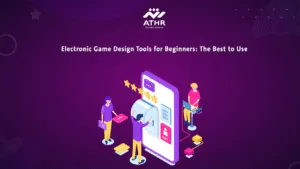
When you start designing a video game, the tools you use will significantly impact the quality and speed of your game’s development. Here’s a list of some essential tools that can be useful for you as a beginner in game design:
1. Game Engines:
- Unity: One of the most common game engines, featuring an easy-to-use interface and support for many platforms like mobile and PC.
- Unreal Engine: Unreal Engine boasts significant graphical power and is used to develop games with very advanced graphics. It requires some programming experience but allows you to easily create 3D games.
- Godot: A free and open-source engine that allows you to easily design 2D and 3D games.
2.Graphics and Design Tools:
- Blender: A free program used to create 3D graphics, and it’s an ideal tool for designing characters and models.
- Photoshop: Used to design 2D graphics, such as game backgrounds and character icons.
3.Programming Tools:
- Visual Studio: Primarily used for writing code. It integrates well with Unity and Unreal Engine.
- PyCharm: Considered ideal if you are using Python for your game development.
Comparison of the Most Popular Game Design Tools
When choosing the right tool for designing your game, it’s important to consider the type of game you want to develop and your programming experience level. Let’s compare the most popular game design tools:
1.Unity vs Unreal Engine:
- Unity: The best choice for beginners, featuring an easy-to-use interface and support for many systems. It also has a huge library of ready-made tools and components.
- Unreal Engine: Boasts high graphical power and is primarily used for developing 3D games with high-quality graphics. However, it may require more programming experience compared to Unity.
2.Godot vs Unity:
- Godot: A good option if you are a beginner and need a simple, open-source engine. It works well for 2D games and allows you to easily modify the code.
- Unity: The more professional choice, characterized by flexibility and strong community support. However, it may take longer to learn.
How to Choose the Right Tool for Your Project?
Choosing the right tool for your game design depends on several factors:
- Game Type: If you plan to design a 2D game, Godot or Unity would be ideal. If you’re thinking of a 3D game with complex graphics, Unreal Engine would be the most suitable choice.
- Programming Experience: If you are a programming beginner, it is preferable to start with Unity or Godot, as these tools have intuitive and easy-to-use interfaces.
- Resources and Budget: If you are working within a limited budget, Godot and Unity offer many free tools. Unreal Engine is powerful, but may require more resources.
- End Goal: Consider the platform you want your game to run on. Unity and Unreal allow you to publish games on multiple platforms such as smartphones, PCs, and gaming consoles.
Looking for a professional team to develop your game? 📞 Contact us to discuss the details!
What are the Stages of Video Game Development?
Video game development is a complex process that requires good planning and precise execution. There are several essential stages you need to know to achieve success in designing your game. Here are the main stages of game development:
From Idea to Execution: Understanding the Core Stages of Game Development
- Idea and Planning: The game development process begins with the idea. You must have a clear vision of the game type, target audience, and the story or concept you want to tell.
- Design: In this stage, the game’s graphics, characters, interface, and various elements are designed. Everything related to visual design takes shape in this stage.
- Programming: After the game is designed, the programming stage begins where ideas are turned into reality using programming languages like C++, Python, or JavaScript.
- Testing and Iteration: The game is regularly tested to ensure there are no programming errors or performance issues.
- Launch and Marketing: After the game is developed and tested, it is launched to the public. You must have a strong marketing strategy to attract new players.
How to Determine the Timeline for Each Development Stage?
It is important to set a timeline for each stage to ensure smooth workflow. Here are some tips for determining the timeline for each stage of game development:
- Allocate Time for Each Stage: Divide the project into small stages and determine the time each stage will take. Be realistic in your time estimation, and don’t over-estimate.
- Add Time for Contingencies: Always add buffer time for any unexpected delays, such as programming issues or design problems.
- Organization and Coordination Among the Team: If you have a team, make sure to assign tasks to each team member in line with the timeline.
Do you want to know how 3D technologies will change the future of game development ? 📖 Read our article to discover more!
How to Achieve Success in the Video Game Design Industry?

The video game design industry is full of challenges and opportunities. If you want to succeed in this industry, you must follow some important strategies that contribute to attracting players and increasing your user base.
Game Marketing Strategies and How to Attract Players
- Online Marketing: Using platforms like Google Ads and Facebook Ads can help attract interested players. You can also leverage gaming platforms like Steam, Google Play, and the App Store to promote the game.
- Building a Game Community: Interact with your audience via social media like Twitter, Instagram, and Discord. Through continuous interaction, you can build a strong relationship with players.
- Continuous Updates: Regularly updating the game with new content and fixing issues helps maintain continuous player interest.
Case Studies of Video Game Successes
Let’s look at some examples of successes in the video game industry:
- Mafia Game: This is an exciting experience that immerses you in a world of gangs and adventures full of risks and fateful decisions. Form alliances, carry out secret missions, and face your opponents with the mindset of a leader. Your goal? To become the invincible boss in a ruthless city.
- Monopoly World: A strategic board game where properties are bought and sold, houses and hotels are built, and rents are collected from other players with the aim of achieving the greatest wealth and bankrupting competitors.
Developing and designing video games is a challenging field, but with good planning and understanding of the core stages of work, you can achieve success. Remember that effectively marketing your game and utilizing modern marketing strategies will make your game more attractive to players.
Are you ready to embark on your video game design journey?
Start developing your idea now and follow the steps that will help you succeed in this exciting field. If you need support or consultation about game development, 📨 call us now for a free consultation.


